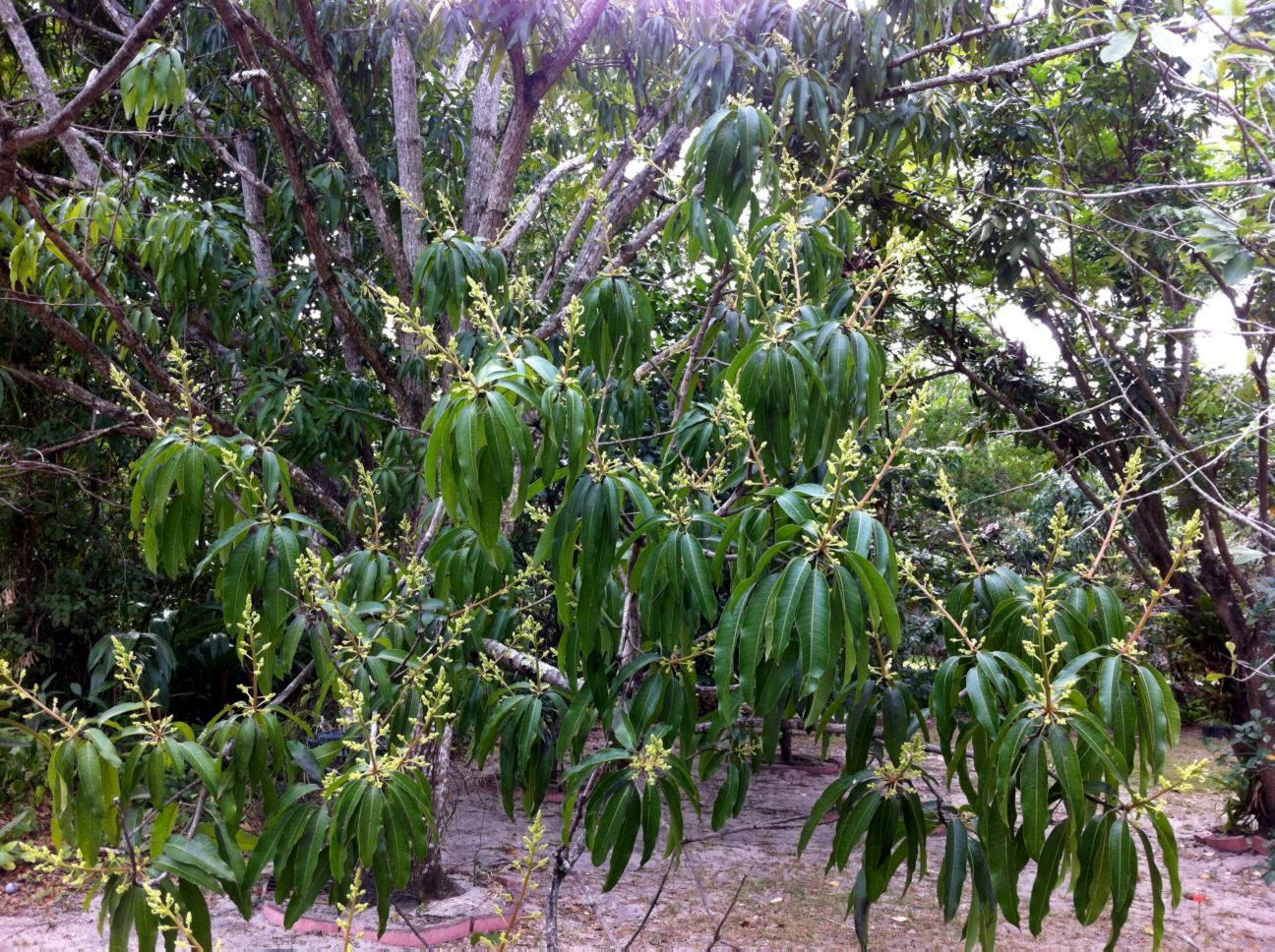Flowers of Ok Rong
Do you know that mango is the dominant tropical fruit produced worldwide, followed by pineapple then papaya and avocado? In Miami, we find all four in abundance, especially the mango. It is now the time that the mango trees are getting busy to conceive fruits. This year, my Ok Rong tree shows up first over a whole host of the other types of mango, and it is breaking out with flowers on every single branch. Typically, mango trees begin to produce flowers in dry weather conditions, which is the case for Miami this year. The danger is that the pollen may be washed away under heavy rains and less fruits will be set. There lies the randomness nature of a given crop in a given year. You never can tell if you can expect a bumper crop until you see it. If you are new to Miami, make sure you know that mango belongs to the Anacardiaceae family which include poison ivy and poison sumac. The sap of the mango tree and the skin of its fruit contain urushiol that causes skin irritation that will remind you of the times you encountered with the famous poison ivy or poison oak.
Mango flowers are visited by fruit bats, flies, wasps, wild bees, butterflies, moths, beetles, ants and various bugs seeking the nectar. Strangely, the honeybees are not particularly interested in pollinating mango flowers. Go figure why! My yard does not lack the insects enumerated above so we'll have a few Ok Rong this summer for sure. Come and get it!



No comments:
Post a Comment